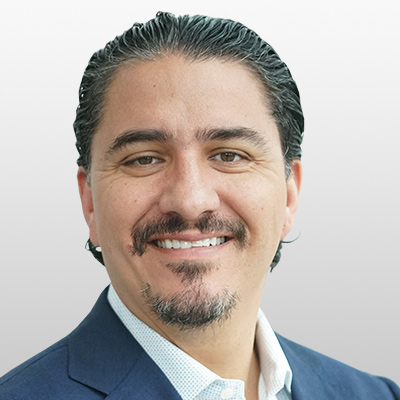
Survey Says
-
 Jared Dillian
Jared Dillian
- |
- July 25, 2019
- |
- Comments
I should download the Family Feud wrong answer noise. It might come in handy in the future.
You guys…
Thousands of you took my bond survey (thank you for doing that).
Many of you have been very naughty.
- 45% of you said that 0-20% of your portfolio is invested in bonds.
- 51% said that if you were starting a portfolio from scratch, you would keep the same allocation to bonds.
Naughty! People just love those sweet, sweet stocks and those 10 years of historical returns. Apparently, few of my subscribers are over the age of 11. If you were, you might remember a period that was terrible for stocks and pretty darn good for bonds.
I’ve talked several times about how the optimal portfolio has as much as 65% bonds, versus a 35% allocation to stocks. Yes, most of the time that portfolio has a lower return. It also has a lower volatility, which is the point. Volatility causes people—even super smart people—to make stupid investment decisions.
You have heard me say that before. Clearly, a large percentage of you did not listen. Maybe I can tell you a few more things that will spark your imagination.
Convexity
You might ask yourself: “Why the hell should I invest in bonds now? Interest rates are so low!”
Fair point. It is not much fun being an income investor when 10-year Treasurys only yield 2%. And the conventional wisdom is that most people invest in bonds for income.
There is, however, another reason you can invest in bonds with low interest rates. For the price appreciation!
If interest rates go even lower, these bonds will go up a lot.
You might say: “How can interest rates go any lower? They are already almost zero.”
Well, they can go to zero, and they can go lower than that, too. It might even happen here in the United States.
If that comes to pass, then the prices of these bonds are literally going to skyrocket—because of convexity.
I’m not going to do a whole finance lecture on bond convexity today, but just know that convexity is curvature. Bond prices will go up a lot faster than they come down.
Like what you're reading?
Get this free newsletter in your inbox every Thursday! Read our privacy policy here.
No policymaker in the world—literally none—wants higher interest rates. There are still people out there trying to short bonds, fighting the last war.
I have written in The Daily Dirtnap (you may want to consider a subscription) that there is a nonzero probability that the bond market will turn into a full-fledged bubble, just like dot-com stocks in 2000. Maybe you think it already is a bubble. You ain’t seen nothing yet!
I have just listed a bunch of reasons why one should invest in bonds, but for now, you shouldn’t care about anything I said. All you should care about is a bond’s contribution to portfolio risk.
Unhappy Returns
All anyone cares about these days are returns. The thinking is that you need 8% (or 10, or 12%) returns to save for retirement. News flash: if you sustain a 50% drawdown and panic into a diaper, the returns stop compounding. You would have been much better off with a diversified portfolio of stocks, bonds, and a little bit of commodities.
I have heard stories about the robo-advisors putting people into 80+% stock allocations even when they list their risk preferences as “conservative.” For a lot of financial advisors, conservative just means “safer stocks,” not “less stocks.”
One example—a young reader was figuring out his 401K allocation, and the target retirement fund that was being offered was a 2060 target retirement fund… which had 90% stocks and 10% bonds. I told him to look at the 2030 target retirement fund, even though he is in his early 20s. He said the allocation wasn’t much better.
The world is gorked up on stocks.
The optimal portfolio (based on the Sharpe Ratio) is the 35/65 portfolio. 35% stocks, 65% bonds. That’s for all ages.
I have tested this. Remember when the S&P 500 Index dropped almost 60% during the financial crisis? That’s a 50 to 100 year event, and the worst drawdown you would have taken with this portfolio—the absolute worst—is 25%. Nobody can survive a 60% drawdown, and dollar-cost average all the way down. Unless you’re in a coma.
I had suspected people’s reticence to invest in bonds or bond funds is rooted in a lack of understanding of how they work. The results of the bond survey back that theory up.
You don’t invest in what you don’t understand. Okay, people invest in what they don’t understand all the time, usually with disastrous results. This time, let’s do it right.
On That Note
In the coming weeks in The 10th Man, we’re going to talk about bonds: what’s happening right now, some of the most misunderstood concepts around them, and of course—the questions and concerns you shared in my bond survey (there were a lot).
I am not being hyperbolic when I say that the range of questions you asked was spectacularly broad. The multiple-choice answers were all over the map, too.
Anyway, one of my favorite comments so far was: “Each time I learn about bonds, I understand what the speaker is saying, but only until he stops talking.”
Challenge accepted.
Like what you're reading?
Get this free newsletter in your inbox every Thursday! Read our privacy policy here.

Jared Dillian
subscribers@mauldineconomics.com

 Jared Dillian
Jared Dillian